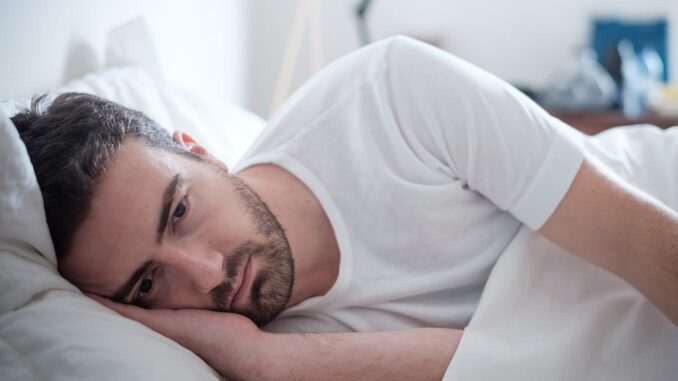
A primary sex hormone, testosterone plays many roles in the human body. It regulates the production of sperm, boosts sex drive, helps build bone and muscle mass.
Testosterone levels (T) in men, peak during adolescence and remain high during their 20s. Around the age of 30, these levels start to decline. This is completely normal. The decline continues as we age, at a rate of about 1 percent each year.
But when the decline is too much, or the T-levels are too low, the condition is diagnosed as low T or hypogonadism.
Although men need much higher levels of testosterone, women also require smaller amounts of testosterone for their health and well-being.
Given below are the important signs and symptoms of low testosterone seen in men and women.
Signs and Symptoms of Low Testosterone in Men
Testosterone plays so many roles in a man’s health and well-being. So when testosterone levels go down below what’s needed, each of these functions gets affected. Let’s take a closer look at some of them.
Low Testosterone at Puberty: Testosterone helps a boy develop into a man. It is very important for the onset of puberty in adolescents. During this period, boys go through a growth spurt. Deepening voice, growth of body hair, growth of reproductive organs such as the penis are some of the notable signs. Low T can affect all these developments.
A small penis and small or undescended testis can result from low T during puberty. It can lead to stunted growth, shorter height, and poor muscle development (1).
Aging Appearance: Appearance of wrinkles, thinning hair, weight gain, and loss of muscle strength are some of the evident signs of aging. Low testosterone levels can cause all these to occur faster. Testosterone influences the appearance of skin by stimulating collagen synthesis. This reduces the formation of wrinkles and helps maintain a youthful look (2).
Abdominal Obesity: Optimum testosterone levels are needed for maintaining healthy fat distribution in men. Testosterone increases fat burning (lipolysis) in the body (3). It discourages the accumulation of (visceral) fat around the organs in the body and in the abdominal cavity.
Abdominal obesity and low testosterone follow a vicious cycle. Abdominal fat can negatively affect testosterone production. Low testosterone can cause more abdominal fat to build up. Abdominal obesity in men also leads to a rise in the production of the female hormone estradiol. High levels of estradiol result in further fall of testosterone levels (4).
Abdominal obesity indicates you have a fatty liver. This reduces the T-levels faster by decreasing the proteins that bind to testosterone. These proteins are called sex hormone-binding proteins (SHBG) that helps in the transport of testosterone in the blood. Lower T increases the fat formation and the cycle goes on.
Decreases Muscle Mass and Strength: Testosterone supports protein synthesis in the muscles. It also increases muscle growth in response to exercise. Therefore, low testosterone naturally impacts muscle growth negatively. It results in a decrease in muscle mass and muscle strength (5).
Fatigue: Testosterone is important in the production of Red Blood Cells (RBCs). These are blood cells that carry oxygen from your lungs to all other cells in your body. They also take carbon dioxide back to the lungs for you to breathe out.
Low testosterone levels can lead to reduced red blood cell (RBC) production. This can result in anemia. Fatigue is a common symptom seen in adults with low T (6).
Joint pain: Men with low testosterone often complain about joint pain. Testosterone is very important in maintaining bone density and bone mass.
Low levels of testosterone make your bone porous and weak. This may lead to osteoporosis as the bones become fragile. Significantly low T levels are noted in those with rheumatoid arthritis (7).
Palpitations: Palpitation is a sensation that feels like your heart is racing. It can be due to stress or anxiety. Palpitation is also observed as a symptom in men with low testosterone levels. Low T can increase the risk of cardiovascular diseases (8).
Night Sweats: Night sweats is a term for sweating during the night to the point that it soaks your pajamas or sheets. Night sweats in men may be due to low levels of testosterone. Low T and night sweats in men are common in elderly men as testosterone tends to decline with age (9).
Urinary problems: With testosterone deficiency, the prostate tends to degenerate with prostate enlargement causing urinary problems such as difficulty in urination, pain during urination, frequent need to urinate, the need to get up at night to urinate, and prostate infections.
Mental and Behavioral Changes:
Nervousness, irritability, loss of self-confidence, and lack of authority can be symptoms of low T.
Testosterone is associated with behavioral traits in men – such as competitiveness, confidence, leadership, aggression, and so on (10, 11). Low testosterone can cause depression (12).
Those with low testosterone may also have trouble with concentration and poor memory. They may experience a loss of self-confidence and may hesitate to take initiative.
Signs and Symptoms of Low Testosterone in Women
Women also need some amounts of testosterone, but not as much as men do. Whether man or woman, an optimal balance of testosterone and estrogen is required for the healthy functioning of the body.
Low testosterone in women tends to occur after menopause (13). Signs and symptoms of low testosterone in females include:
- Muscle weakness
- Depression and lack of interest in life
- Unexplained tiredness and lethargy
- Low libido
- Weight gain
Rather than low testosterone, more women may suffer from high testosterone. This is seen in women with polycystic ovary syndrome (PCOS). Insulin resistance can lead to PCOS and high testosterone in women.
The Final Note
Men with low testosterone levels may experience a range of symptoms including low libido, erectile dysfunction, increased body fat, irritability, sleep disturbances, and loss of body hair.
Women with low T may experience low libido, depression, fatigue, weight gain, and muscle weakness
Your doctor can examine you and help diagnose low T. They can explain how to treat low testosterone and overcome the symptoms you are experiencing. Discuss with them the potential benefits of testosterone treatments such as testosterone replacement therapy (TRT).
